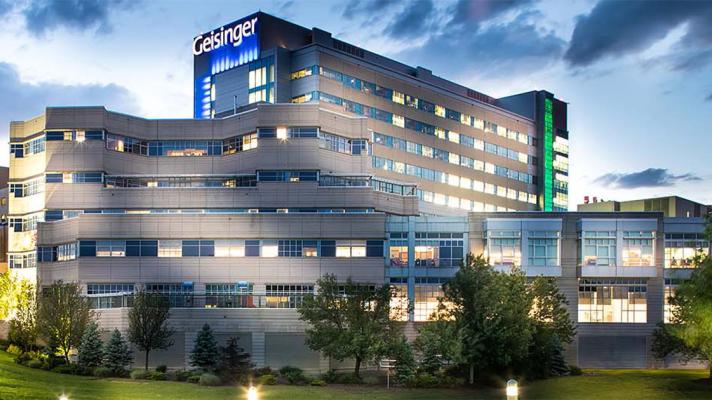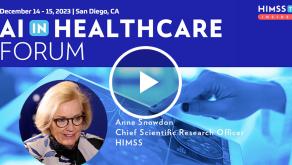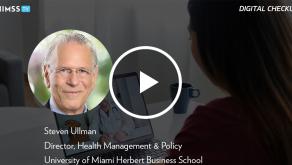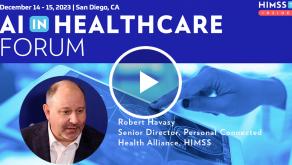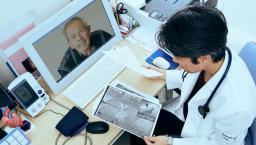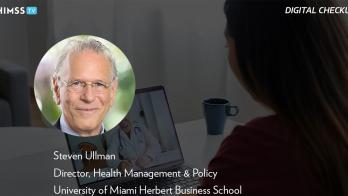Using RPM to manage customized, specialty care between office visits

CoachCare CEO and cofounder Andrew Zengilowski
Photo: Andrew Zengilowski
Yes, telemedicine has finally made it into the mainstream of healthcare delivery. From the comfort, ease and safety of their own homes, patients are seeing doctors of all stripes.
But what about what happens with patients between doctor appointments, namely for patients with chronic illnesses? This is where a form of telemedicine – remote patient monitoring – can play a big role.
Andrew Zengilowski is CEO and cofounder of CoachCare, vendor of an RPM platform designed to decrease patient costs, increase care efficiency and reduce staff burnout. We sat down with him to discuss managing patients not just during appointments but always, and the role RPM can play.
Q. What types of technologies and practices today can help improve health outcomes and reduce costs to the U.S. healthcare system?
A. Remote patient monitoring technology meets patients where they prefer to be – at home. Monitoring in between the traditional office visit reduces the potential severity of health outcomes. With almost 50% of medical groups reporting no-show rates increasing since 2019, providers can collect meaningful health insights without the patient taking time – often away from work – to travel to the office.
Using pulse oximeters, glucose monitors, blood pressure cuffs and scales, the traditional in-person touchpoint between the provider and the patient is being disrupted to meet the realities of where a lot of patient assessment and care is happening today.
Changing America’s healthcare economics begins with one patient at a time. With the keen ability to manage patients between physician office visits and customize treatment plans, monitoring patients in between visits can reflect a positive effect on costs to the healthcare system where billions of dollars each year are spent on ER visits, hospital stays and readmissions.
RPM enables providers to intervene in real time to improve health outcomes and to reduce the rate of these occurrences. For instance, the cofounder of Diablo Family Physicians in Northern California says from his patients’ homes meaningful health insights are collected from a device they wear and with an app that helps his team see what’s going on to "tease apart what is fact."
Our app and team manages patient outreach for his staff to receive real-time messages for the first time. Meaningful data collection filled time and data voids without patients taking time out of their day to make office visits. Over 12 weeks, Diablo Family Physician patients wearing a blood pressure cuff were helped to manage behavior to see a reduction in their systolic blood pressure by 20 points. That’s a huge number for improved health outcomes using RPM.
Providers see RPM technology analyzing what is going on with patients' health outside of an office setting, which helps gather facts year round. For example, healthcare providers may take blood pressure readings from their offices and see healthy ranges, only to later see elevated and dangerous levels when the patient uses at-home blood pressure cuffs.
By alerting the provider via RPM, more frequent interventions, especially for higher-risk patients being seen by specialists, may decrease emergency room visits, complications and late-diagnoses with more severe health concerns and consequences. Some patients are not covered to see dietitians, and that is where RPM plays an important interventional role.
Insurance pays for the scale and the app assists patients with calorie counting and water-intake. They get the best of both worlds without having to pay out of pocket to see a dietitian, which practices have told us about their patients. One patient started using our app and in nine months lost 100 pounds.
Before starting he was aware of his high blood pressure and diabetes but not that he had the potentially life-threatening sleep apnea. Several times he fell asleep in his car. He progressed through the program shifting behavior and now jogs at 3:30 a.m. before work. This technology is changing healthcare economics one patient and doctor relationship at a time.
Q. What should providers be thinking about related to technology that more efficiently manages their patients year-round for improved health outcomes?
A. Technology is underutilized in healthcare, including RPM. According to the American College of Physicians, only 24% of practices use RPM technology.
RPM technology extends a practice’s reach with a secondary care team, a part-time business partner to a certain degree. Credentialed RPM clinical teams carry MDs, PAs, RNs, LPNs or CMAs on staff to monitor patient dashboards for the practice’s patients typically deemed medically appropriate to enroll in RPM.
More touchpoints, in addition to the clinical benefit of using this technology between visits, can improve communication and relationships between patients and providers.
This digital health tool and secondary care team lessens the pain of staffing shortages to care for current patients and increases the bandwidth of existing resources who then hold the capacity for adding new patients. Providers can get ahead of painful staffing issues with RPM to improve outcomes without adding additional staff.
The team gets an alert, for example, when a patient gains weight and can determine what is or is not working in the current care plan, as well as focus on at-risk patients versus the healthy ones. Instead of waiting on a patient to make an appointment, the practice receives alerts and can schedule an appointment to alter treatments to drive better health outcomes.
Engagement and management of existing patients who qualify for RPM means more resources spent onboarding new patients and growing the practice.
Managing practice groups efficiently and profitability can, with the right technology, tools and team, double revenue without having to add one patient. Robust RPM systems relieve staff burdens and burnout while increasing patient accountability for their health outcomes.
Staff can manage both existing and new patients to decrease the costs of providing care by enabling providers to be more efficient and to grow revenue that can be reinvested into the practice.
Q. What is the future of remote patient monitoring? How are providers moving from its initial capabilities of video appointments to managing customized, specialty care between office visits?
A. The future of RPM will be defined by broader adoption, novel devices, the application to more conditions and consolidation of vendors.
We are still in the early stages of RPM adoption by hospitals, health systems and physicians and can expect a dramatic acceleration. RPM represents a paradigm shift in the convenience, efficiency and efficacy of healthcare and will be a near-universal offering among providers in the future.
While it has taken telehealth services decades to gain broad acceptance, the confluence of fair reimbursement rates for RPM, the COVID pandemic and patient preference for more convenient options has forced providers to rapidly adopt these technologies.
RPM necessarily developed around limited available hardware and the range of metrics to track health outcomes. Connected scales, blood pressure cuffs and glucometers all existed prior to the introduction of RPM CPT codes, leaving RPM primarily focused on conditions such as hypertension and diabetes.
Devices capable of monitoring a broader set of vitals and biometrics open up RPM for pain management, orthopedics, seizure management, mental health, nephrology, oncology and others. For example, NXTSTIM has developed a novel device for pain management that supports RPM by providing the supervising physician with key patient pain experience data. Others are pending clearance for use in RPM.
FIGR8 has developed a musculoskeletal device with possibilities to more accurately quantify range of motion. Epitel has developed a wearable EEG and data analytics platform with potential applications for seizure diagnosis. While these devices sit in different stages of development, it’s clear that innovation of remote monitoring hardware is poised to expand the reach of RPM.
Finally, consolidation of RPM continues. As the telehealth market saw many new entrants in the early days of video appointments and now is dominated by a few options for providers, so too will the RPM market evolve. CoachCare has completed two RPM acquisitions in the past three months of smaller vendors. Verustat has raised money specifically to acquire several RPM businesses.
Historically, high valuations throughout 2020-2022, have delayed consolidations. But with today’s more favorable valuation environment, rapid consolidation is underway.
Q. What types of care can providers expect to perform with RPM moving forward?
A. To take the power of RPM to a new level and to decrease some of the burdens on our healthcare system, we as an industry need to understand the best ways to cater to patients’ specific and complex needs.
For instance, growth in RPM will include the ability to efficiently serve patients being seen by specialists in pain management, orthopedics, cardiology, nephrology, oncology, mental health and other specialty care. The future of RPM rests on capabilities for constant innovation that benefits providers, patients and payers.
For example, seeing a dietitian is often not covered by insurance. However, medically necessary RPM patients can benefit from RPM tools such as a scale and technology to track metrics such as calories and water intake. This is an instance where RPM that adapts to the realities of patient needs can result in healthier, more aware and accountable patients.
Another future aspect of RPM involves platform developers to roll up services by perceived competitors into the most comprehensive offering for providers to serve their patients in the most robust, real-time manner possible. This is happening right now. We can expect to see more acquisitions and rollups of RPM models that reflect what we’ve discussed here.
Follow Bill's HIT coverage on LinkedIn: Bill Siwicki
Email the writer: bsiwicki@himss.org
Healthcare IT News is a HIMSS Media publication.




